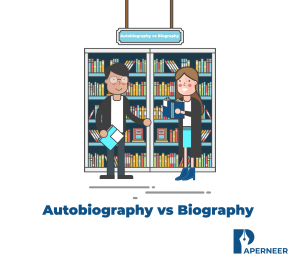Capstone Project – A Complete Guide A capstone project is sometimes the...
Read MoreGood Rhetorical Analysis Essay Examples

Writing with rhetorical strategies is never an easy task. It requires analytical skills. However, if you want to learn the strategies, you can look at good rhetorical analysis essay examples from various sources. This handout also brings you an elaborate guide for a rhetorical analysis essay, its outline, writing tips, and some good rhetorical analysis essay examples to help you in your academic writing.
Defining Rhetorical Analysis Essay
A type of essay known as rhetorical analysis evaluates how effectively an author or speaker conveys his or her perspective to the audience by examining nonfiction texts such as speeches, articles, or visual texts. The goal is to evaluate how successful the strategies are in persuading, informing, or captivating viewers. The author analyzes the text by breaking and paying attention to rhetorical techniques such as ethos, pathos, and logos.
Rhetoric is the ability to persuade others, and a rhetorical analysis examines how a speaker or writer uses language to persuade an audience. For example, one might analyze a politician’s tone, vocabulary, and emotional appeals in a speech to understand how they gain followers.
Rhetorical Analysis Essay Outline
A systematic outline is essential while writing a rhetorical analysis essay to create a coherent and comprehensive argument. The following is a typical outline:
Introduction
You can start your introductory paragraph with a captivating fact, quote, or question to get the reader’s attention. Furthermore, you can include some background information about the text being evaluated to provide context. This section includes the title, author, publication date, and purpose of the text.
Thesis statement: A concise and brief statement that summarizes the main point of your rhetorical analysis. It should answer the following questions:
- What is the main goal of the text?
- What rhetorical tactics does the author use to achieve this goal?
Main Body
Each body paragraph should focus on a single rhetorical tactic. Typically, the body of a rhetorical analysis essay is organized according to the type of appeal or approach used.
- Ethos (credibility and authority)
Discuss how the author creates credibility and authority.
How does the author communicate trustworthiness?
Does the author use personal anecdotes or expert testimony?
- pathos (emotional appeal)
Examine how the author appeals to the reader’s emotions. What emotions does the text evoke and how?
Does the author use vivid language, personal anecdotes, or emotional examples?
- Logos (logical appeal): examines the author’s use of logic and reasoning
Does the author use facts, figures, or logical arguments? Are the arguments coherent and convincing?
In an academic journey, one of the most challenging tasks is preparing your dissertation and the research paper. However, it no longer remains that tough if you start focusing on tips for writing a dissertation with consistency. Dividing your writing tasks for a specific number of days and for a specific amount of time a day can assist you best in writing a well-established dissertation.
This blog brings you tips for writing a dissertation with consistency along with the dissertation writing process, tools, and challenges.
Conclusion
The conclusion paragraph summarizes the rhetorical strategies that have been discussed in the body, reflects on the overall effectiveness of the essay, and restates the thesis statement in light of the analysis.
Rhetorical Analysis Example Thesis
The thesis statement in a rhetorical analysis essay is an important part because it establishes the argument that will be presented throughout the essay. It usually takes the following form:
Identification of the rhetorical methods used.
How do these tactics help the writer achieve his goal?
Example: “In his 1963 speech “I Have a Dream,” Martin Luther King Jr. uses ethos to establish credibility, pathos to appeal to the audience’s emotions, and logos to logically support his arguments, all to inspire action for racial equality.”
The thesis should not simply summarize the text but rather present an argument regarding the author’s use of rhetoric.
How to End a Rhetorical Analysis Essay?
The conclusion of a rhetorical analysis essay ties together all the arguments advanced in the paragraphs and restates the thesis in light of the analysis. The conclusion should not provide new ideas but should evaluate the effectiveness of the author’s persuasive methods.
Most important aspects of a conclusion:
Summarize the most important points.
Confirm the theory based on the data presented.
Conclude with a final thought or reflection on the overall implications of the text. Consider the following example: “In summary, King’s strategic use of emotional appeal, logical reasoning, and personal credibility not only made his speech one of the most powerful of the 20th century but also played a central role in promoting the civil rights movement.”
Tips for Rhetorical Analysis Essay
Good examples for a rhetorical analysis essay alone cannot assist in learning it but you would need some writing tips as well to craft an effective rhetorical analysis essay. The following tips can assist you in the process:
- Understand the rhetorical appeals, i.e. ethos, pathos, and logos.
- Your goal is to evaluate how the author achieves his or her goal rather than summarize the content of the text. Instead of retelling the story, focus on analyzing the rhetorical methods used.
- Support your interpretation with clear examples and direct quotes from the text. Be sure to explain how each quote illustrates a rhetorical strategy.
- Keep a clear and logical framework. Start with the introduction of an explanation that supports your main idea and then continue with sections that concentrate on different rhetorical tactics and close a conclusion.
- Make sure that your attachment has no grammatical errors and has a smooth river. Correction reading plays a crucial role in maintaining clarity and accuracy.
Rhetorical Analysis Essay Samples
To assist you with writing rhetorical analysis essays, underlying samples can be good examples for you to learn the rhetorical analysis essay:
Analysis of the rhetorical aspects of Martin Luther King Jr.’s speech “I Have a Dream”
Martin Luther King Jr.’s well-known speech, “I Have a Dream,” is a significant speech in American history. Given during the March on Washington for Jobs and Freedom in 1963, King’s address marked historic in the Civil Rights Movement. In this speech, King uses ethos, pathos, and logos to inspire hope, encourage unity, and advocate for change.
King builds the ethos at the beginning of his speech by quoting important documents in American history, such as the Declaration of Independence. In this way, he identifies with the principles of the nation and increases his credibility. In addition, his reputation as a leader of the civil rights movement gives him additional authority.
King used strong emotional appeal throughout his speech. He vividly paints the pictures of injustices done to African Americans through his emotions and words to stir the audience’s emotions. His famous line from the speech, “I have a dream that my four little children will one day live in a nation where they will not be judged by the color of their skin but by the content of their character,” gives hope of longing for a better life and future.
Finally, he proposes logical appeal by pointing out his contradictions with American values. He gives the argument that despite the terms of equality for all citizens in the Declaration of Independence, African Americans have been deprived of their rights. This argument evokes the feeling of a call for justice and equality in the citizens.
In short, King’s skillful use of ethos, pathos, and logos helped the Civil Rights Movement to gain momentum and made its part in American history.
Rhetorical Analysis of a Coca-Cola Advertisement
Coca-Cola’s marketing “Share a Cola” has actually used rhetorical methods to persuade customers to buy their goods. The advertising, which customizes the bottles of Coca-Cola with prominent names, uses the emotions of people (pathos), the feeling of connection, and personal identity.
The campaign uses Pathos to relate the action of sharing Coca-Cola with friends and the community. By putting people’s names on the bottles, the company encourages consumers to buy a Coke for their friends which can help strengthen the emotional bonds and make the friendship stronger.
Coca-Cola uses its established reputation as a popular brand to also rely on Ethos. The background of the company in participation of events and special occasions helps to build trust among the public.
The presence of logos is subtle and yet clear. Coca-Cola implies that buying a cola can create connections between individuals, suggesting a natural evolution from consumption to building important bonds.
In summary, the “Part a Coke” campaign from Coca-Cola uses pathos, ethos, and logos to create an emotional bond with customers and to strengthen the favorable reputation of the brand.
Rhetorical Analysis Essay Topic Ideas
Choosing the right topic for your rhetorical analysis essay is important. You can use the below-mentioned topic ideas for your essay:
Political speeches: Analyze a famous speech by a politician at an event, a press conference, or on an international platform.
Advertisements: A TV commercial or ad can also be used for a rhetorical analysis essay in which the author can break down the persuasive techniques used in the ad.
Editorial or Opinion piece: You can opt for an editorial or opinion piece from an Op-ed page of a newspaper and examine how the author has analyzed and argued on an issue.
Documentaries and films: You can analyze how the filmmaker narrates and visualizes an issue or a point.
Public Service Announcements (PSAs): Consider the emotional and rational appeals in a PSA about a social issue.
TED Talks: Examine the rhetorical methods employed in a popular TED Talk.
Say goodbye to Mistakes in Term Papers
Avoid Errors in Term Papers Writing a theme may be a vital tutorial task that needs careful designing and...
Read MoreUnraveling the Stories: Autobiography vs Biography
Autobiography vs Biography Understanding the excellence between autobiography and biography is crucial for...
Read More




